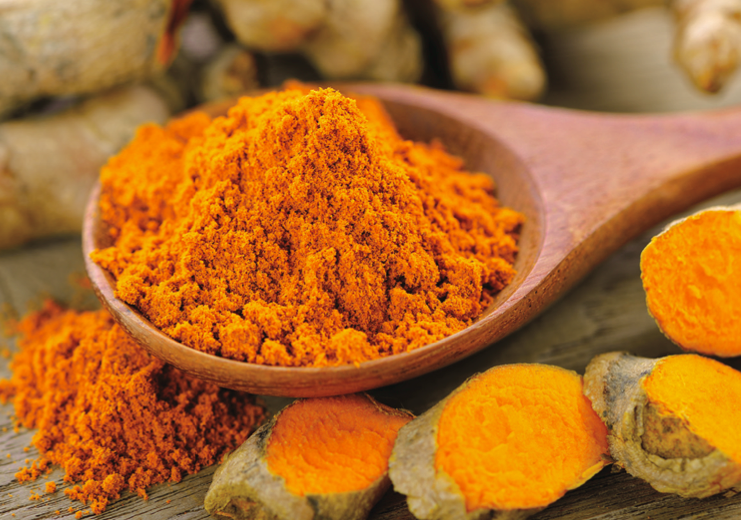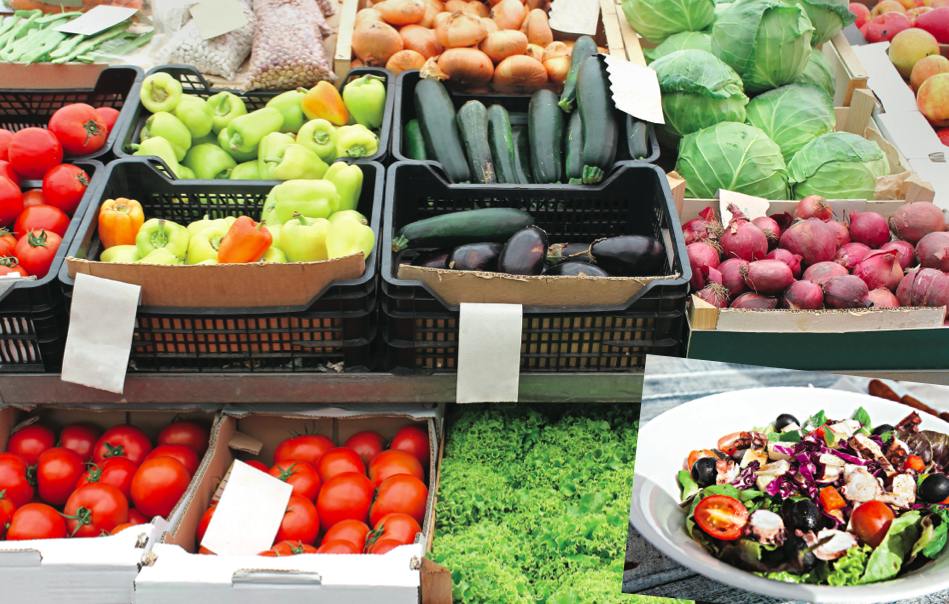The yellow colour of Asian curries is due to turmeric, a spice which appears often in health news.In India and in some other parts of south-east Asia, curries with turmeric are consumed daily and often more than once per day. In those regions, the incidence of degenerative mental conditions in old age is lower than here in North America, and some types of cancer are significantly rarer. Not surprisingly, turmeric and curcumin, an active component of turmeric, receive wide-ranging scientific study, more so than any other spice.Other benefits from turmeric that have been scientifically studied touch on cataracts, diabetes, M.S., HIV, and skin and liver problems. Unfortunately, many of the studies, though numerous and expert are small. It is hard to get research funds for major health research on foods because drug companies cannot easily put patents on a spice and raise the price.Another problem is quantity. Traditional diets that provide evidence of health benefits of curries are diets that include turmeric in very large quantities; that spice is not quick to absorb. Micro-grinding and cooking in healthful oil may turn out to help.So what does all this mean in practical terms? If you come to consult me in my Downsview clinic will I prescribe hot curries? Don’t count on that! But you don’t need any prescription to enjoy the curries.I started using turmeric in my kitchen around 2009. Now it is a family favorite. Consumption seems safe because millions of people eat curry more than ten times a week. For me, there is nothing to lose and a possible benefit to be gained. Turmeric as a simple curry and also in morning smoothies has become a very regular part of my cooking though it wasn’t part of my background. I don’t buy commercial curry mixes with salt and preservatives. I deeply admire and respect those who have mastered the complex, time-consuming, highly refined and elegant art of traditional curries made from scratch. I modestly experiment with simple turmeric and internet recipes. Try it. Learning new things is good for the brain. That is a scientific fact.We would be very pleased to respond to your health-related questions in this column. Write to nicole@IndividualCare.com. Nicole Constant is a registered Doctor of Naturopathy. Her website is: www.IndividualCare.CA. Before coming to Canada, she practiced as a medical doctor in Europe. She has lived in the Jane-Finch neighborhood since coming to Canada, where she has also been employed in social work and community development in addition to volunteer service in Mediation, Laughter Yoga and the Community Action Planning Group of York West.
Create a New Normal for the New Year
A New Year brings the opportunity to say yes to trying something new. Why not start by featuring a new ‘winter’ vegetable each week?Vegetables that thrive in cold-climates tend to be starchy, rooty, dense and bitter. Although, it is true that the colder months offer a more limited range of produce, winter boasts some surprising B-list superstars:Kohlrabi German for “cabbage turnip”, the greens and bulbs are edible and can be eaten raw or cooked. In fact, the bulb, which has a taste and texture similar to that of broccoli stems, tastes great once it is peeled, sliced and just sprinkled with some salt. The best way to eat the greens is to cook them just like you would kale. Kohlrabi needs to be thoroughly peeled before eating. Both the stems and the fibrous layer beneath need to be removed to reveal the edible crisp flesh underneath.Turnip They often have a cute blush of pink or purple near the top, where the sunlight hit the turnip while it was still in the ground. The larger the turnip, the more intense the flavour. Turnips are often squatter and rounder, with a brighter white colour. Cabbage There is good reason why the vegetable carries a pedestrian reputation: it is versatile, suiting itself nicely dressed up in a raw salad, braised in a savoury broth or just steamed. It is cheap and it lasts forever. This vegetable hates to go bad. And then there is sauerkraut and kimchee -giving a new purpose to the plant.Parsnips This hardy root vegetable enjoys cool climates – it requires frost to convert its starches to sugars and develop its sweet, nutty flavour. Although it bears a striking resemblance to a carrot, it has a pale, cream-coloured skin. Its tough, woody texture softens with cooking. They can be used in place of potatoes, sweet potatoes or turnips in cooking. They perform beautifully when roasted, pureed into soups, or mashed.Celeriac Also known as celery root, celeriac is not actually the root of celery stalks (although it tastes very similar). This plant grows underground, but the top is not edible. Purchase fat, globe-like types with rough-looking skin. The uglier, the better. The tough skin should not be eaten, but it helps keep the vegetable fresh. Store it with the skin on, next to your potatoes in a cool, dark place.Rutabaga Sweeter than a potato, and twice as creamy, this root can be mashed or made into oven "fries." Rutabagas are often coated in a wax seal when found in the grocery store. If this is the case, you must remove and discard it before eating. Keep rutabagas in a dark, cool place, along with the rest of your storage roots. They can also be refrigerated.Broccoli Rabe, also referred to as Rapini Is a more bitter, leafier vegetable than its counterpart, broccoli, but likes similar cool growing conditions. Look for leaves that are vibrant green, without any wilting or yellowing. Buds need to be unopened and stalks should be sharp and fresh looking. The vegetable can keep for five days in the refrigerator. Rapini can be added to an omelet, stir-fry or topped on pizza.Try some new vegetables in the kitchen this winter and do not forget – warmer temperatures will spring upon us soon.


